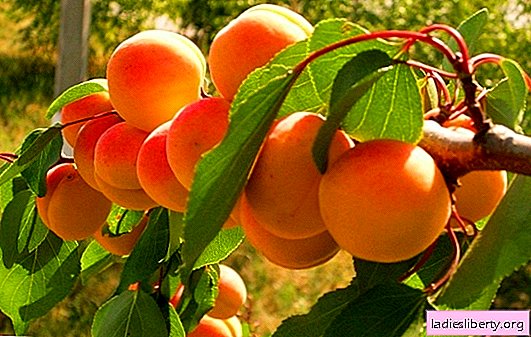
A pleasantly smelling grass, small in size - thyme, is able to cover sunny, stony and dry areas on your estate with a continuous carpet.
Ancient physicians and scientists spoke and wrote about the unusual abilities of this plant (antibacterial, antifungal and antiviral). The Greeks assigned him the ability to bring the "breath of life."
This plant continues to amaze people in our time - modern scientists claim that pathogens for centuries have not been able to develop resistance to substances contained in thyme (thyme).
If this plant grows on your estate, then the surrounding area will be saturated with a pleasant aroma, it will become a cozy dense "carpet" of its flowers and modest greens. Thyme is able to successfully combine with various plants in the garden, often it is grown as a garden ground cover crop.
Plant description
Thyme is different peoples, at different times and was called differently: pine forest, incense, thyme, chavor, thyme, lemon darling, Bogorodskaya grass, swan, etc. Most of his relatives have the same features:
1. Perennial shrub of small length (the height of the shoots varies depending on the type of plant and its species may be in the range of 5-35 cm);
2. Creeping or lying lignified shoots on which additional roots grow, stems are covered with brown bark;
3. Peduncles forming throughout the shoot with villi;
4. Rigid leaves are placed one opposite the other, the color is light, depending on the species, can change to dark green;
5. Dimensions and shape of leaflets can vary depending on the type (round, oblong, etc.);
6. Flowers in inflorescences of a small size and different colors (the main colors are lilac, white, pink inflorescences, in hybrid specimens the color scheme contains more different shades);
7. A pleasant (warm) smell, flowering lasts from June to the last decade of August.
Planting thyme and receiving planting material
To plant thyme, select a warm and bright area in the garden. A shaded plant will develop poorly and begin to stretch. In extreme cases, you can plant plants in a small partial shade.
For thyme to grow, the soil must have an alkaline or neutral reaction. Fertile, light, drained soil is best suited for this crop. If the site is moist, heavy soil, the plant begins to vyprivat, in this case, drainage eliminates this deficiency. Thyme can be mulched with small gravel, gravel or pebbles.
Thyme is planted in the first decade of autumn or early spring, with autumn planting, it is necessary that the bushes are well rooted. In a snowy winter, the plant does not require additional shelter, and if there is not enough snow, it is advisable to cover the area with thyme with spruce branches.
Thyme propagation
Seed way. It is convenient if you need to grow a lot of thyme seedlings. To do this, sow the seeds in the spring in the garden or in the greenhouse, when the seedlings appear, you need to immediately weed so that the sprouts of weeds do not interfere with the development of seedlings. Often seeds are sown in containers, and already grown seedlings are planted in the garden. Thyme should be planted in a light soil mixture - peat and sand in a ratio of 1 to 1. Small seedlings need to be dried when drying the top layer of the soil, slightly sprayed from the spray gun. With early sowing of thyme seeds, you can get flowering plants in the first year after planting. If you sow the seeds at the usual time, the flowering of plants will come next year.

Cuttings. Cuttings are harvested from the creeping shoot by cutting off its green part. Thyme can be propagated using this technology throughout the year. Creeping varieties of small height can be propagated by harvesting short cuttings (up to 5 cm). The easiest way to root them is by putting them in a container and covering them with a jar on top. You can not water the plants strongly, otherwise the risk of root rot increases. After 12-15 days have passed, the stalk will form the first roots.
By dividing the bush. The old plant is dug up, carefully divided into parts, the delenki are planted in a previously prepared place.
Planting thyme
This culture needs to be grown in a warm, well-lit area, in the shade of thyme will develop slowly. It successfully complements the surroundings of a pond in the garden, garden paths and an alpine hill. For cultivation, it is better to choose a loose, light soil with a neutral or alkaline reaction.
Before planting, you must:
• In the autumn, it is good to dig a plot, their land you need to choose the roots of weeds;
• Feed the earth with mineral and organic fertilizers, there will be rotted manure or good compost to the place;
• In the second decade of April, re-dig the soil, fence the area, and add 20 g / m2 of urea;
• Sow the seeds on the surface of the bed, covering them with a layer (1 cm) of river sand. Sowing is desirable to produce ordinary with row spacing of 40 cm;
• Cover with a film on top.
In rows between individual plants leave a free space of about 30 cm. For the emergence of friendly seedlings, the temperature is 20 degrees Celsius, then only two weeks will pass between sowing seeds and the appearance of the first seedlings. Thyme develops slowly, and its seeds are small, for this reason, when propagating this crop, it is better to use the seedling method.
• Sowing thyme seeds for seedlings, produced in the second decade of March. Seeds are not buried in the soil (since they are very small), but are evenly scattered on the surface and covered with sand;
• The necessary seedling age for transplanting to the garden - 70 days;

Thyme grows well in areas where vegetables used to grow, but keep in mind that this crop has been growing in one place for about 5 years.
Thyme Care
Thyme is the first time you need to loosen and weed. Water the planted plants, but do not flood them. Thyme well tolerates low temperatures, but for insurance in harsh winters, you can cover it with fallen leaves. After cutting the greens, it is advisable to feed the plot with an azophos. Thyme, growing for more than two years, you need to feed thyme with a mixture of mineral fertilizers and a two-week infusion of mullein. If you cut the greens to lignified parts, then the bushes will become denser and more compact.
Attention! Thyme fresh manure does not tolerate well.
It is good if you feed the plants with a small dose of horn flour and high-quality compost.
Important care operations:
• In the spring and after the thyme has bloomed, slightly trim the bushes, this will outwardly make them denser and give them a beautiful shape. Cut the stems to the woody parts, along the length it is about 2/3 of the length of the shoot;
• Plants develop well in dried soil, but nevertheless during drought it is necessary to water them occasionally;
• This culture is unique in that it is not afraid of pests and practically does not get sick.
Thyme Harvest
Traditionally, this grass is harvested at Trinity.
Traditional healers say that during this period, plants are most effective.
The raw materials are cut during flowering, for this well-leafy shoots are cut.
Do not injure the bushes by breaking or breaking them. The bush can simply be accidentally pulled out of the soil.
Harvested raw materials are dried, like other medicinal herbs, they are scattered on dense fabric spread out in the shade.











